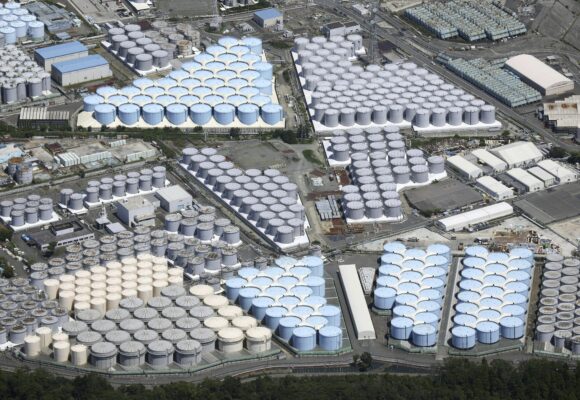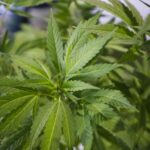Initial tests showed seawater radioactivity to be below detectable levels after the release of treated radioactive water from Japan’s Fukushima plant, its operator, Tokyo Electric Power Co (TEPCO), said on Friday.
The seawater samples contained less than 10 becquerels of tritium per liter, the utility said, below its self-imposed limit of 700 becquerels. The World Health Organization has a limit of 10,000 becquerels for drinking water.
A becquerel is a unit of radioactivity.
The released water is filtered to remove most radioactive elements except for tritium, an isotope of hydrogen that must be diluted because it is difficult to separate from water.
Japan Begins Releasing Nuclear Wastewater in Process That Could Last 30 Years
Friday’s results came as the Nikkei newspaper said the government was preparing additional funding support for regional fisheries in the wake of China’s blanket ban on Japan’s aquatic products following the discharge of the water.
Chinese customs have not detailed the specific products the ban covers.
Japan’s fisheries minister, Tetsuro Nomura, said the ban was “extremely regrettable” and ran counter to international trends, such as the European Union’s lifting last month of all import curbs related to Fukushima.
Nomura said the government would take measures to diversify Japan’s fish exports and develop new markets for China-dependent products, such as scallops. China took more than half of Japanese scallop exports in 2022, government figures show.
Japan exported about $600 million worth of aquatic products to China in 2022, making it the biggest market for Japanese exports, followed by Hong Kong.
Sales to China and Hong Kong accounted for 42% of all Japanese aquatic exports in 2022, government data shows.
Food Exporters Affected
More than 700 Japanese food exporters are affected by China’s suspension of seafood imports, a report by market research firm Teikoku Databank showed.
It said 727 Japanese companies export food products to China, making up about 8% of all Japanese firms shipping goods to the neighbor.
The report added that 316 Japanese firms export foods to Hong Kong, which announced its own ban on seafood imports from 10 Japanese regions after the Fukushima release.
South Korea also said on Friday that it would sharply expand radiation testing of farmed seafood as demands grew from fishermen and the public to ensure safety.
More than 4,000 additional tests will be run at private institutions by the end of this year on farmed seafood products before they are shipped, Vice Oceans Minister Park Sung-hoon told a regular news briefing.
Experts will draw samples from fish farms for laboratory checks. No radiation has been detected since the tests began in late July, the minister said.
Japan says the water release is safe, adding that the International Atomic Energy Agency (IAEA) has concluded it would have “negligible” impact on people and the environment.
Japan’s environment ministry and TEPCO are doing tests of the seawater, while the fisheries ministry will run tests on fish in the area, with global nuclear watchdog the IAEA also on site to monitor the discharge and perform analysis.
(Reporting by Kantaro Komiya and Sakura Murakami in Tokyo, Hyunsu Yim in Seoul; editing by Gerry Doyle and Clarence Fernandez)
Photograph: This aerial view shows the tanks which contain treated radioactive wastewater at the Fukushima Daiichi nuclear power plant in Fukushima, northern Japan, on Aug. 22, 2023. For the wrecked Fukushima Daiichi nuclear plant, managing the ever-growing radioactive water held in more than 1,000 tanks has been a safety risk and a burden since the meltdown in March 2011. The start of treated wastewater release on Thursday, Aug. 24, marked a milestone for the decommissioning, which is expected to take decades. (Kyodo News via AP)
Related:
Was this article valuable?
Here are more articles you may enjoy.



 As Rates Rise, Majority of Homeowners Say Insurance Industry Is in Crisis: Survey
As Rates Rise, Majority of Homeowners Say Insurance Industry Is in Crisis: Survey  Allstate, Nationwide Post Dramatic Q12024 Homeowners Loss Ratio Drops: S&P
Allstate, Nationwide Post Dramatic Q12024 Homeowners Loss Ratio Drops: S&P  US P/C Insurers Post Best Q1 Underwriting Result In 17 Years
US P/C Insurers Post Best Q1 Underwriting Result In 17 Years  A $29 Billion Weed Market Fights to Diversify Amid Legal Hurdles
A $29 Billion Weed Market Fights to Diversify Amid Legal Hurdles 

